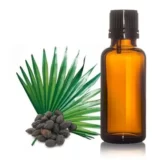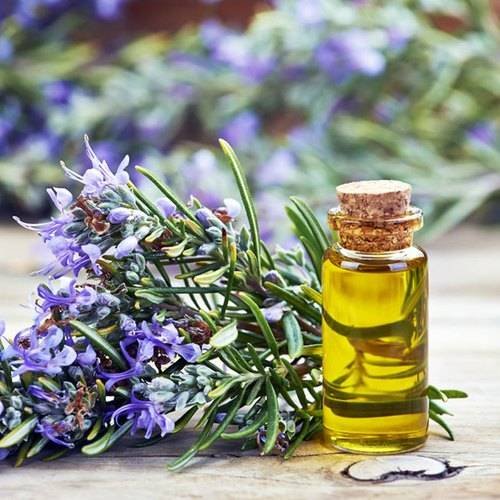Description-
Rosemary is a herb used for aromatherapy as well as for culinary purpose, is known as Rosmarinus officinalis belongs to Lamaeceae family. Rosemary is evergreen plant which has grayish green, needle shaped leaves with slightly blue colour small flower. Rosemary plant is native to Mediterranean region, Asia and also cultivated in France, Tunisia and Yugoslavia.
Extraction-
Rosemary oil is obtained from the flowering tips of Rosmarinus officinalis herb through steam distillation method.
Composition-
Its constituents are α-pinene, β-pinene, borneol, camphor, bornyl acetate, camphene, 1-8 cineole, and limonene.
Properties-
Rosemary oil is clear in colour, refreshing herbal smell, evergreen like scent and watery viscosity. It is volatile in nature.
Blending-
Rosemary essential oil is particularly well blends with Frankincense, lavender, clary sage, cedar wood, basil, thyme, citronella, lemongrass, elemi, geranium, chamomile, peppermint and cardamom.
Uses-
- Rosemary oil is used for culinary purpose to cook dishes because of its good aroma that tastes goods on potatoes and roasted lamb.
- It is used for hair care as it stimulates follicles; making hair grow longer & stronger, reduce premature hair loss.
- It is used to help in removing bad breath and prevent gingivitis, cavities, plaque builds up.
- It is used in aromatherapy as it relieve stress, headache, muscle pain because it decreases level of the cortisol in saliva.
- It is used in room fresheners, cosmetics, beauty aids food, bath oil, candles and perfume as it has refreshing herbal smell.
- It is used to eliminate eczema, dermatitis, oily skin and acne.
- It boosts mental activity, increases concentrations.
- It supports healing of neurological tissues and brain function.
- It is used as detoxifier and also enhances bile flow.
- It also reduces cancer risk as it contains antioxidant- carnosol which also function as anti carcinogen.
- It increases nerve growth factor and healing nervous tissue.
- It also used to lowers Dihydroxyestosterone (DHT).
- It is used in creams and lotions as it improves blood circulation and decongesting in skin.
- It is also used in burners and vaporizer therapy as it helps in congestion, overwork and sinusitis, mental & physical tiredness.
Safety and Precaution-
Rosemary oil should be avoided by pregnant or breast feeding or nursing women, excessive use of oil may lead to miscarriage or disability in fetus.
Do not ingest as it can cause vomiting or spasm.
| Specification of Rosemary Oil | ||||
| Organoleptic Properties:- | ||||
| Appearance | Fluid liquid | |||
| Colour | Pale Yellow or almost Colorless | |||
| Odour
|
The odour is strong, fresh, woody-herbaceous, somewhat minty-forest like odour. The fresh notes vanish quickly yielding to a clean woody-balsamic body note which tones out in a dry herbaceous but very pleasant & tenacious bitter-sweet note. | |||
| Botanical Source | Rosemarinus officinales Linn. ( Fam. Labitae) | |||
| Physio-Chemical Properties:- | ||||
| STANDARD | ||||
| Specific Gravity | 0.894-0.912 | |||
| Refractive Index | 1.463 – 1.477 | |||
| Optical Rotation -3° to +18° | ||||
| Solubility | Soluble in Alcohol and other organic solvent and in soluble in water. | |||
| Storage | In well fitted container in cool and dark place. | |||
Specification of Rosemary Oil:
Description – Clear mobile, colorless to pale yellow liquid.
Odor – Characteristic
Specific Gravity – 0.895 – 0.920
Specific Rotation – -5° – +24°
Refractive Index at 20°C – 1.464 – 1.473
Acid Value – 1.0
Alpha-pinene – 9% – 14%
Camphene – 2.5% – 6.0%
Beta-pinene – 4.0% – 9.0%
Beta-myrcene – 1.0% – 2.0%
Limonene – 1.5% – 4.0%
Cineole – 38% – 55%
P-Cymene – 0.8% – 2.5%
Camphor – 5.0% – 15%
Alpha – terpineol – 1.0% – 2.6%
Borneol – 1.5% – 5.0%
Verberone – Max. 0.4%
Storage In well fitted container in cool and dark place.






